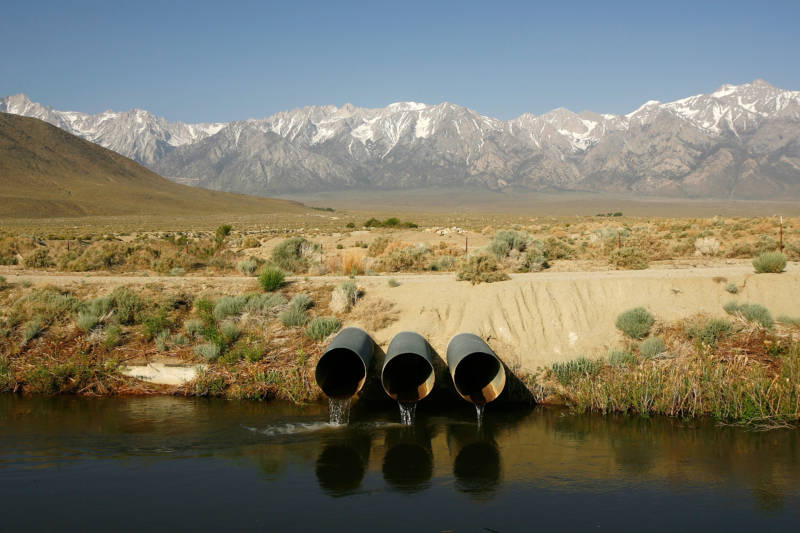Other than the storms that brought fatal flooding and mudslides to Santa Barbara County in January, the winter in Southern California was nearly bone dry until the end of February.
March, Swain said, was a reversal of fortune, with wet weather returning and being accompanied by much colder temperatures, an ideal combination for boosting mountain snowpack. “We actually had a below-average month temperature-wise in most of the state, which hasn’t happened in some places in a long time,” he said. “And that combined with a pretty active storm track meant we got a lot of snow in the mountains over a three- or four-week period.”
Sierra Nevada snowpack nearly tripled during March.
The other good piece of news is that 2017 was a huge water year for California, and the state’s major reservoirs are at 107 percent of average for this time of year, according to the Department of Water Resources. But this also means that California will be working its way through some of its reserves this year as it taps the “bank account” of water supply in reservoirs. And so far, contractors that receive water via the State Water Project are projected to receive only 20 percent of their allocation, although that figure may be amended.
At a manual snowpack reading at Phillips Stations in the Sierra Nevada on April 2, Department of Water Resources director Karla Nemeth used the opportunity to pitch for smarter and more efficient use of water. “We need every Californian to conserve,” she said. After learning to cut back during lean years, recent figures have shown that Californians are nearly back to using as much water as they were before the state’s recent drought.
David Rizzardo, chief of Snow Surveys Section and Water Supply Forecasting at the Department of Water Resources, said the full reservoirs mean there’s “no immediate concern” regarding water supply but there could be “potential impacts should we have a second dry year in a row next winter.”
And another dry year, or at least a year with low snowpack, is a legitimate concern, officials say.
Maggie Macias, an information officer at the Department of Water Resources, said the biggest factor this year in California was a lack of storms, especially during December and February, which are historically the two wettest months. “When we did get storms, most notably those in January and again in March, some were of a warmer, atmospheric river nature, which tends to produce more precipitation as rain rather than snow,” she said. “So warmer storms/temperatures did play their part this year.”
This, she said, is a noticeable trend over the past few years. “We’ve set some high temperature marks month to month or over seasons that are worrisome,” she added.
In recent years, Swain said the overall trend has been a lagging snowpack, even in years when there’s adequate precipitation. And higher temperatures are to blame there. “That’s sort of the warming signal that’s buried in everything now,” he said.
California will still experience wet years and occasional big snow years, he said, but they will become less frequent and less big. A report just published by the UCLA Center for Climate Science found that if nothing is done to curb climate change, Sierra Nevada average spring snowpack is likely to drop by 64 percent by the end of the century and by 30 percent if some efforts are made at reducing greenhouse gas emissions.
But warming impacts are already being seen.
“There has been an expectation for a long time that we would see Sierra Nevada snow lines, the elevation of where the mean snow is falling, creeping up the mountain and we’d see less snow at lower and middle elevations, and then eventually the overall snowpack would start to decrease,” Swain said. “And based on a couple of studies that have come out in the last six months – we’re there. It’s no longer ‘we expect to see,’ it’s ‘we are starting to see this in the real world.’”
